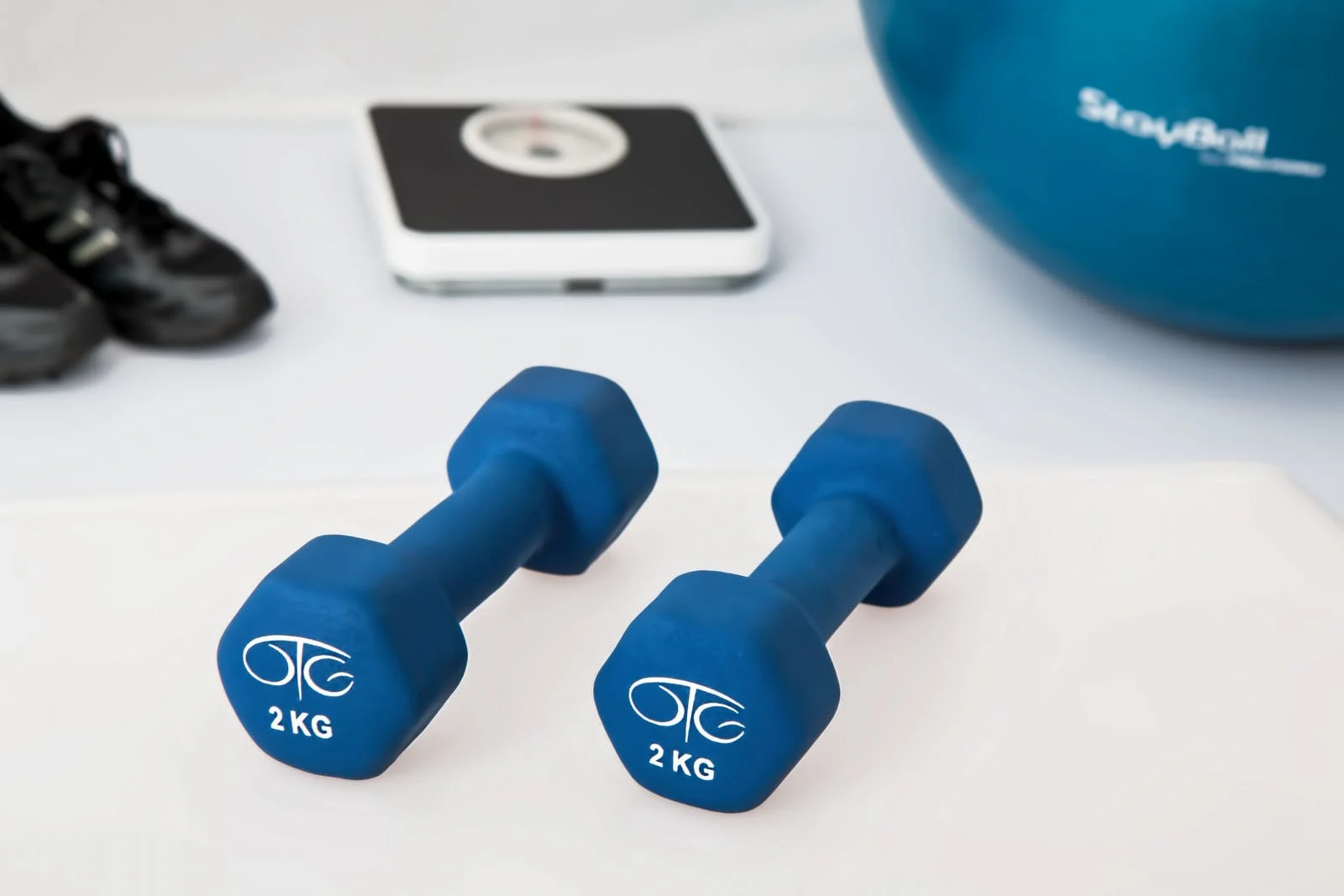Identify Areas That Need Improvement
Before making changes, it's essential to identify which areas of your routine are not serving you well. Ask yourself:- Are there specific times of the day when you feel less productive?
- Do certain habits contribute to stress or frustration?
- Are there areas where consistency is lacking?
Why Consistency Matters More Than Perfection in Healthy Habits
Power of Consistency in Daily Health Practices
Consistency is the secret ingredient to lasting success when it comes to health and wellness. Rather than making dramatic changes overnight, small, repeated efforts build momentum over time. For example, walking for 20 minutes every day, choosing water over sugary drinks at lunch, or practicing mindfulness for five minutes each evening are all simple actions that, when done regularly, create a noticeable impact. The key is sticking with these habits even on days when motivation is low. The same goes for nutritional needs; consistent behavior, whether following a balanced diet or using supplements, can often yield positive results. This philosophy is reflected in the approach of wellness leaders like USANA, who have supported healthier lifestyles for over three decades. They emphasize building sustainable habits with reliable nutritional solutions that fit into everyday routines. Millions worldwide trust their products to support their health and the well-being of their families because they focus on consistency, not unrealistic ideals. It’s these small, regular steps that pave the way for long-term success.Regular health checkups are another vital aspect of maintaining consistency in daily health practices. Scheduling routine visits with healthcare professionals ensures that potential health issues are detected early, allowing for timely intervention and preventive care. According to this professional dentist in Springfileld VA, just like maintaining a balanced diet or staying active, regular screenings, dental checkups, and wellness exams contribute to overall well-being. By integrating these checkups into your routine, you reinforce the habit of prioritizing your health, making it easier to stay on track with your wellness goals.
(more…)How to Transition to a Healthier Lifestyle Without Feeling Overwhelmed
Tracking your progress is a powerful way to stay motivated. It helps you see how far you’ve come and identify...
The Foundation of Personal Health Awareness
Everyone has unique health needs, making it vital to tailor your approach accordingly. Begin by assessing the following areas:- Nutritional needs: What types of foods fuel your body and mind?
- Fitness levels: Are you incorporating movement into your day?
- Mental state: How do you handle stress and maintain emotional well-being?
- Preventative care: Are you proactive about your health screenings and check-ups?
10 Essential Health Tips You Should Know for a Happier, Healthier Life
Get Regular Screenings
Regular health screenings are crucial for early detection of illnesses. It's important to stay ahead of potential issues, from routine blood tests to more specific exams like cholesterol checks or a simple strep test. A strep throat infection, for example, is highly contagious and can escalate if not treated quickly. Fortunately, Googling strep tests near me is now easier than ever, with most urgent care centers and clinics offering fast and accurate testing. Don’t wait for symptoms to worsen—early detection can save you from a lot of discomfort. (more…)10 Science-Backed Lifestyle Changes to Help You Live a Longer, Healthier Life
Embracing Balanced Nutrition for Sustained Well-being
 A balanced diet is the cornerstone of a healthy lifestyle. Incorporating various foods from all the food groups ensures that your body gets the nutrients it needs. Increasing the intake of fruits, vegetables, whole grains, lean proteins, and healthy fats contributes to better health and helps prevent chronic diseases.
Understanding portion sizes and the significance of moderation can prevent overeating and weight gain. It is also important to stay hydrated throughout the day. Water supports metabolic processes and helps eliminate waste.
Knowing your body's calorie and nutritional requirements is crucial for maintaining a balanced diet. If you're unsure where to begin, seeking guidance from a registered dietitian can be a great starting point. For wellness products and nutritional supplements, SkinnyFit offers quality, all-natural health and wellness products—visit skinnyfit.com to explore their range.
Lastly, preparing your meals can give you more control over the ingredients and help you stick to a nutritious diet. Planning can also prevent impulsive decisions leading to unhealthy eating habits.
(more…)
A balanced diet is the cornerstone of a healthy lifestyle. Incorporating various foods from all the food groups ensures that your body gets the nutrients it needs. Increasing the intake of fruits, vegetables, whole grains, lean proteins, and healthy fats contributes to better health and helps prevent chronic diseases.
Understanding portion sizes and the significance of moderation can prevent overeating and weight gain. It is also important to stay hydrated throughout the day. Water supports metabolic processes and helps eliminate waste.
Knowing your body's calorie and nutritional requirements is crucial for maintaining a balanced diet. If you're unsure where to begin, seeking guidance from a registered dietitian can be a great starting point. For wellness products and nutritional supplements, SkinnyFit offers quality, all-natural health and wellness products—visit skinnyfit.com to explore their range.
Lastly, preparing your meals can give you more control over the ingredients and help you stick to a nutritious diet. Planning can also prevent impulsive decisions leading to unhealthy eating habits.
(more…)The Potential Downsides of Pursuing a Healthier Lifestyle and How to Overcome Them
How long you can maintain a health regime is one of the biggest factors in its potential for success. ...
Why Early Detection is a Life-Saver
 It's understandable if you fear visiting the hospital if you feel unwell. You worry that you will get a terrible diagnosis. You would rather pretend that everything is okay than face the truth. Remember that it's better to have early detection of an illness than waiting until everything is late. People's lives were saved because they decided to ask for medical advice early.
You can begin your path to recovery
Just because you received an unfavorable diagnosis doesn't mean your life is over. Even some life-threatening conditions like cancer already have a cure. Many people underwent remission after months or years of treatment. If you decide against getting medical advice, these potential cures might not work anymore. You will regret not starting the process earlier on.
(more…)
It's understandable if you fear visiting the hospital if you feel unwell. You worry that you will get a terrible diagnosis. You would rather pretend that everything is okay than face the truth. Remember that it's better to have early detection of an illness than waiting until everything is late. People's lives were saved because they decided to ask for medical advice early.
You can begin your path to recovery
Just because you received an unfavorable diagnosis doesn't mean your life is over. Even some life-threatening conditions like cancer already have a cure. Many people underwent remission after months or years of treatment. If you decide against getting medical advice, these potential cures might not work anymore. You will regret not starting the process earlier on.
(more…)10 Natural Ways to Improve Your Digestion: Are You at Risk of Developing Digestive Disorders?
Simple lifestyle and diet changes may improve digestion in those experiencing chronic, frequent, or occasional symptoms....
Marriage Cheaters More Likely to Misbehave at Work
Americans Still Exercising Too Little, Sitting Too Much
Brain Aging Impacted by Modifiable Risk Factors
Cardiology Articles Pertaining to Lifestyle and Nutrition Receive Most Media Attention
Almost Half of US Adults Get No Leisure Time Physical Activity in Typical Week
Algorithm Allows Patients To Calculate Their Risk of Stroke and Heart Disease
Song Contests Linked To Life Satisfaction and Health
 Filippos Filippidis MD, MSc, MPH, PhD
Lecturer in Public Health
School of Public Health
Imperial College London
London
MedicalResearch.com: What is the background for this study? What are the main findings?
Response: Previous research suggests that big sports and international events are associated with happiness, productivity, suicides and homicides. Considering the popularity of the Eurovision Song Contest (ESC) in Europe, we wanted to see if there is any association between performance in the competition and life satisfaction and suicides. We used interview data from more than 160,000 people in Europe collected from 2009 to 2015 and found that better performance in the contest was associated with higher levels of life satisfaction in the country. Winning the competition did not confer any additional advantage. When comparing bad performance in the ESC with no participation at all, we found that even bad performance was associated with higher satisfaction with life compared to absence from the competition.
(more…)
Filippos Filippidis MD, MSc, MPH, PhD
Lecturer in Public Health
School of Public Health
Imperial College London
London
MedicalResearch.com: What is the background for this study? What are the main findings?
Response: Previous research suggests that big sports and international events are associated with happiness, productivity, suicides and homicides. Considering the popularity of the Eurovision Song Contest (ESC) in Europe, we wanted to see if there is any association between performance in the competition and life satisfaction and suicides. We used interview data from more than 160,000 people in Europe collected from 2009 to 2015 and found that better performance in the contest was associated with higher levels of life satisfaction in the country. Winning the competition did not confer any additional advantage. When comparing bad performance in the ESC with no participation at all, we found that even bad performance was associated with higher satisfaction with life compared to absence from the competition.
(more…)Healthy Lifestyle Keys to a Longer Life
MedicalResearch.com Interview with: Yanping Li PhD, Research Scientist Department of Nutrition Harvard T.H. Chan School of Public Health MedicalResearch.com: What is the background for...
Not Clear That Physical Activity Programs Reduce Cognitive Decline
 Michelle Brasure, MSPH, PhD, MLIS
Evidence-based Practice Center
School of Public Health
University of Minnesota
MedicalResearch.com: What is the background for this study? What are the main findings?
Response: We conducted a large systematic review to assess the evidence relating to interventions to prevent cognitive decline and dementia. We included experimental studies with follow up times of at least six months. This paper analyzes the physical activity interventions; other papers in this issue address other types of interventions.
(more…)
Michelle Brasure, MSPH, PhD, MLIS
Evidence-based Practice Center
School of Public Health
University of Minnesota
MedicalResearch.com: What is the background for this study? What are the main findings?
Response: We conducted a large systematic review to assess the evidence relating to interventions to prevent cognitive decline and dementia. We included experimental studies with follow up times of at least six months. This paper analyzes the physical activity interventions; other papers in this issue address other types of interventions.
(more…)More Evidence That Higher Education May Lower Risk of Alzheimer’s Disease
MedicalResearch.com Interview with:
Susanna C. Larsson, PhD Associate Professor, Karolinska Institutet, Institute of Environmental Medicine, Stockholm, Sweden
MedicalResearch.com: What is the background for this study? Response: The causes of Alzheimer’s disease are largely unknown and there are currently no medical treatments that can halt or reverse its effects. This has led to growing interest in identifying risk factors for Alzheimer’s that are amenable to modification. Several observational studies have found that education and various lifestyle and vascular risk factors are associated with the risk of Alzheimer’s disease, but whether these factors actually cause Alzheimer’s is unclear.
We used a genetic epidemiologic method known as ‘Mendelian randomization’. This method involves the use of genes with an impact on the modifiable risk factor – for example, genes linked to education or intelligence – and assessing whether these genes are also associated with the disease. If a gene with an impact on the modifiable risk factor is also associated with the disease, then this provides strong evidence that the risk factor is a cause of the disease.
MedicalResearch.com: What are the main findings?
Response: Our results, based on aggregated genetic data from 17 000 Alzheimer’s disease patients and 37 000 healthy controls, revealed that genetic variants that predict higher education were clearly associated with a reduced risk of Alzheimer’s disease. A possible explanation for this link is ‘cognitive reserve’, which refers to the ability to recruit and use alternative brain networks or structures not normally used to compensate for brain ageing. Previous research has shown that high education increases this reserve.
We found suggestive evidence for possible associations of intelligence, circulating vitamin D, coffee consumption, and smoking with risk of Alzheimer’s disease. There was no evidence for a causal link with other modifiable factors, such as vascular risk factors.
(more…)Lifestyle Modifications Slow Progression To Diabetes As Effectively As Medications
- Diabetes affects 1 in 11 adults worldwide and though there is evidence that lifestyle modification (eating healthier diets and exercising about 150 mins a week) and certain medications can prevent or delay diabetes onset, it is not clear which of these strategies offers long-term benefits.
- To answer this question, we compiled all available randomized controlled trials of lifestyle programs and medications to prevent diabetes and analyzed the data to see if the diabetes prevention effects persisted in the long-term. We specifically compared studies where the lifestyle or drug interventions were discontinued to see if the effect was long lasting or diminished when the intervention was stopped.
Wearable Device Study Confirms Moderate-to-Vigorous Physical Activity Linked To Decreased Mortality
Inactivity Plus Frailty Predict Mortality
2017’s Fattest Cities in America
Health Lifestyle Could Cut Cardiovascular Disease 50% in Chinese
Lifestyle Modifications May Improve Health and Prognosis in Breast Cancer Patients
Non-Exercise Algorithm Predicts Fitness and Lifestyle-Related Disease
Pandemic of Global Physical Inactivity Costs Lives and Money
Physical Activity During Leisure Time Linked to Cancer Risk
- 1
- 2















